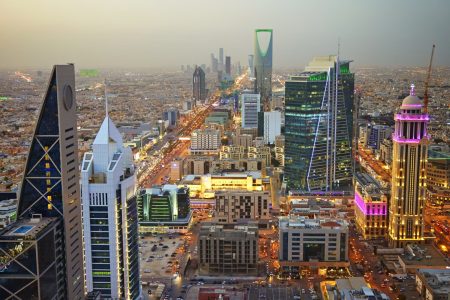Riyadh, Saudi Arabia.
Xavierarnau | E+ | Getty Images
Saudi Arabia is moving full steam ahead with its focus on domestic investment — and with that, higher requirements for foreigners coming to the kingdom to take capital elsewhere.
The kingdom’s $925 billion sovereign wealth fund, the Public Investment Fund, saw its assets jump 29% to 2.87 trillion Saudi riyals ($765.2 billion) in 2023, its annual report published earlier this week revealed — and local investment was a major driver.
The fund’s investments in domestic infrastructure and real estate development grew 15% year-on-year to 233 billion riyals, while its foreign investments increased 14% to 586 billion riyals. At the same time, the Saudi government introduced laws and reforms to facilitate and even mandate investment in the country as it builds out its Vision 2030 plan to diversity its oil-reliant economy.
“The PIF’s report marks a shift from externally driven investments to a focus on domestic opportunities. The days of viewing Saudi Arabia as a mere financial reservoir are ending,” Tarik Solomon, chairman emeritus at the American Chamber of Commerce in Saudi Arabia, told CNBC.
“Today, success with the PIF hinges on partnerships grounded in mutual trust and long-term vision, where stakeholders are expected to contribute meaningfully with capital and not just seek profits.”
One example is the kingdom’s headquarters law, which went into effect on Jan. 1, 2024, and requires foreign companies operating in the Gulf to base their Middle Eastern HQ offices in Riyadh if they want contracts with the Saudi government.

Saudi Arabia’s recently-updated Investment Law seeks to attract more foreign investment as well — and it’s set itself a lofty goal of $100 billion in annual foreign direct investment by 2030.
Currently, that figure has averaged around $12 billion per year since Vision 2030 was announced in 2017, according to data from the kingdom’s investment ministry — still a long way from that goal.
Some observers in the region are skeptical as to whether the $100 billion figure is realistic.
“The new investment law is absolutely critical to facilitating more FDI, but it remains to be seen whether it will lead to the huge increase and quantum of capital required,” a financier based in the Gulf told CNBC, speaking anonymously due to professional restrictions.
Solomon echoed the sentiment, pointing out that higher spending on major projects will require higher breakeven oil prices for the Saudi budget.
“It remains to be seen whether the PIF’s domestic investments will deliver the anticipated returns, especially in a region full of instability and oil-dependent budgets facing prolonged periods of low oil prices,” he said.
Still, the new law will “improve local business conditions to attract investment from abroad,” James Swanston, Middle East and North Africa economist at Capital Economics, wrote in a recent report.
Investors have long complained that murky and often ad-hoc rules deterred greater…
Read More: Saudi Arabia’s spending is adopting a clear shift in strategy

